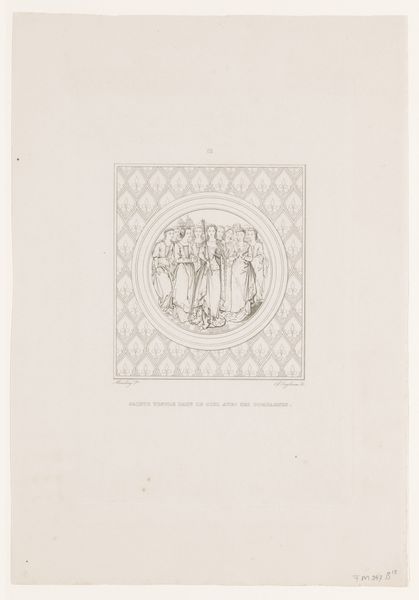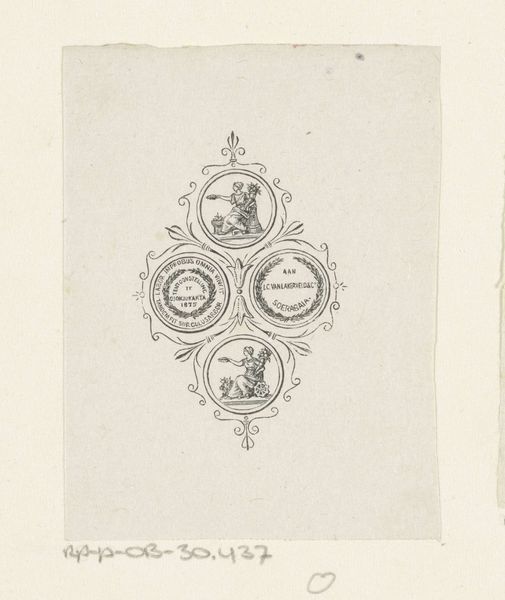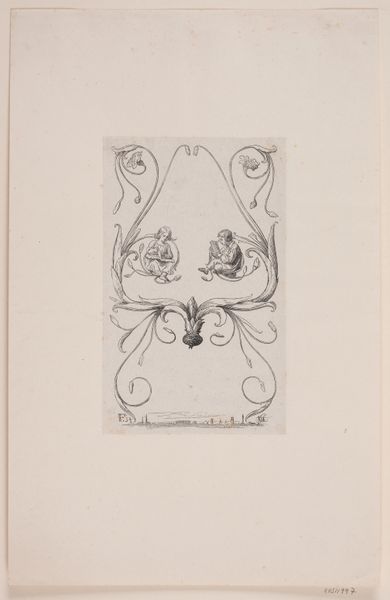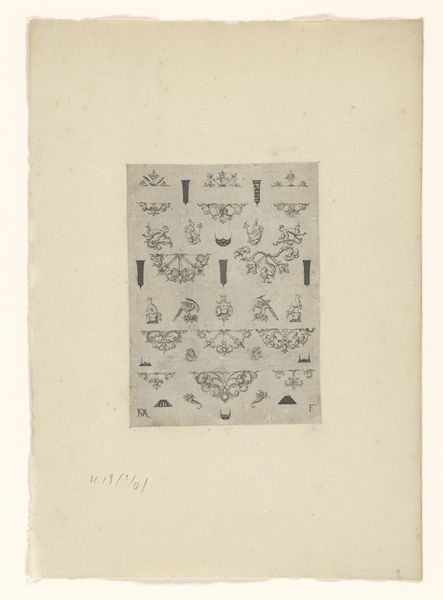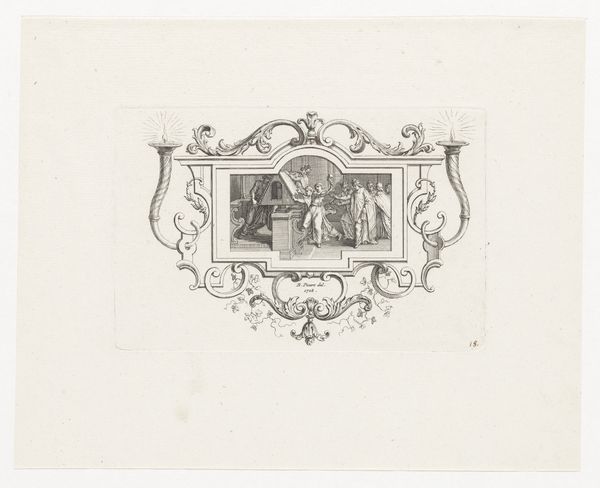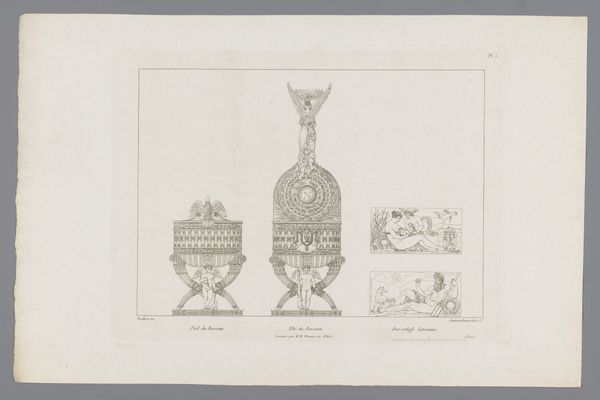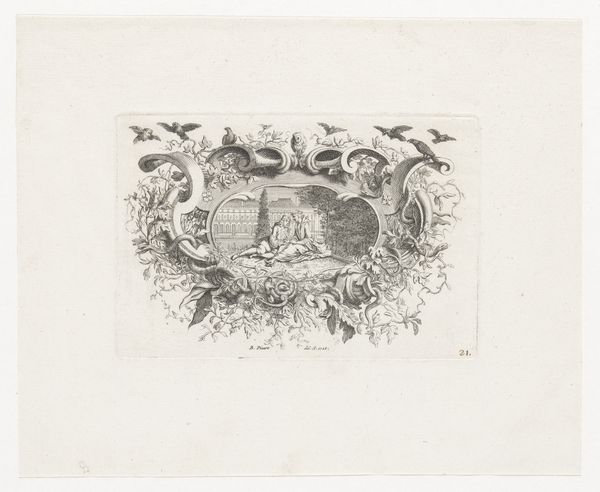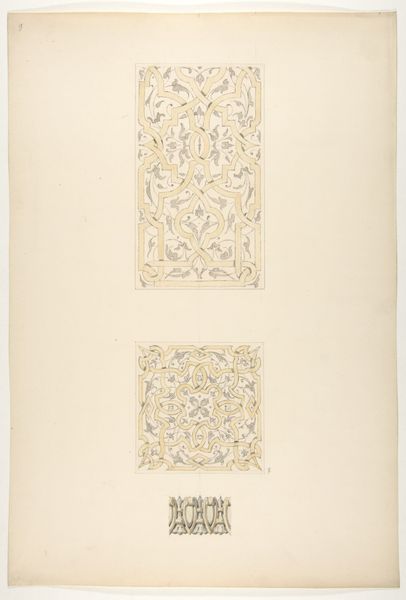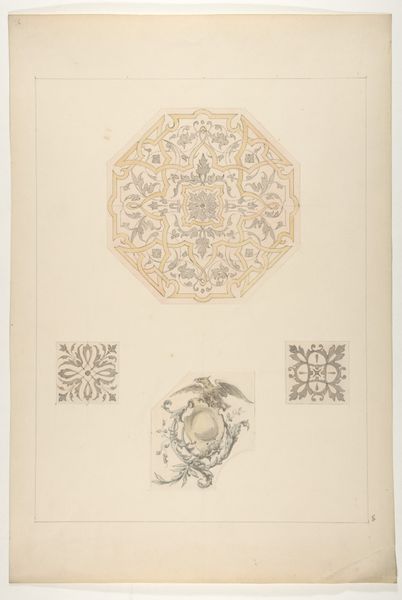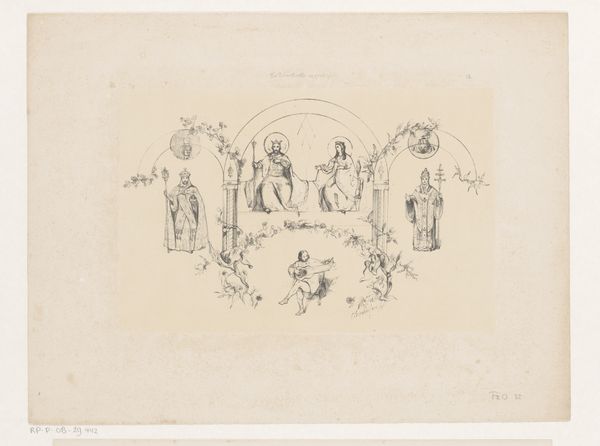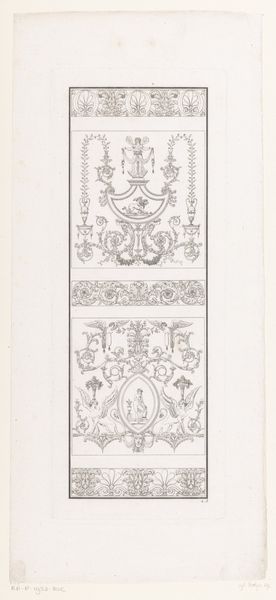
drawing, print, paper, engraving
#
drawing
#
allegory
# print
#
old engraving style
#
white palette
#
figuration
#
paper
#
romanticism
#
engraving
Dimensions: height 275 mm, width 187 mm
Copyright: Rijks Museum: Open Domain
Editor: Here we have Charles Onghena's "Engelen vereren H. Ursula," created as an engraving in 1841. It’s got a wonderfully ethereal quality to it, almost ghostly, with those pale tones and fine lines. What strikes you about this work? Curator: It feels like a whispered dream, doesn’t it? Those angelic figures, caught in delicate orbs, are almost more suggestion than solid form. And it makes you think about how sound shapes perception – music, like angels, can feel just beyond our grasp. Are they real? Are they memory? Or perhaps Onghena wanted us to feel that in-between space, that yearning. Do you get a sense of yearning from it? Editor: I do! I feel the sense of longing or reverie coming through. There's something very quiet about it. The musical instruments—one looks like a lute, maybe?— contribute to the atmosphere of reverence, I suppose, but it also feels a bit…detached. Curator: Detached is a fantastic word! Maybe Romanticism's fascination with the spiritual wasn't always a comfort. Maybe there was a sense of loss in trying to grasp something so immense. Those instruments… do they bridge the earthly and the divine or do they underline the impossibility of ever truly reaching it? It feels more like a memory of a song than an actual melody, if that makes any sense? Editor: That definitely resonates. It’s almost as if the music is fading, just like the delicate lines of the engraving. I hadn't thought about that disconnect, but now it's so clear. Curator: Exactly! And sometimes, isn’t that the most powerful kind of art? The art that leaves you not with answers, but with beautiful, lingering questions… questions that keep humming, faintly, in your heart. Editor: Absolutely! I think I’ll be humming these questions for a while.
Comments
No comments
Be the first to comment and join the conversation on the ultimate creative platform.
